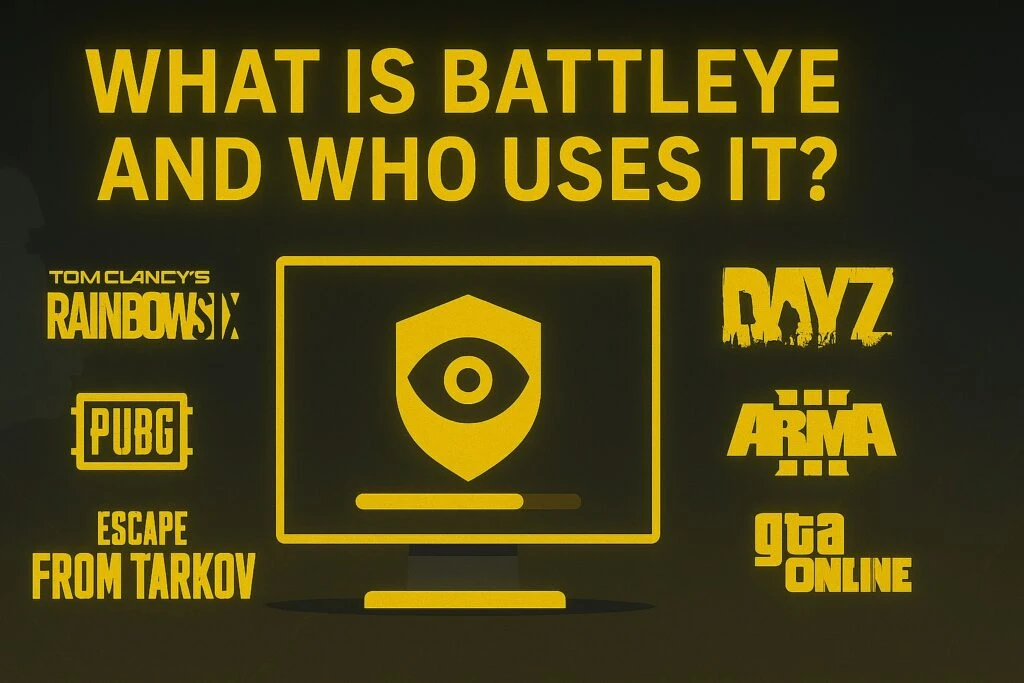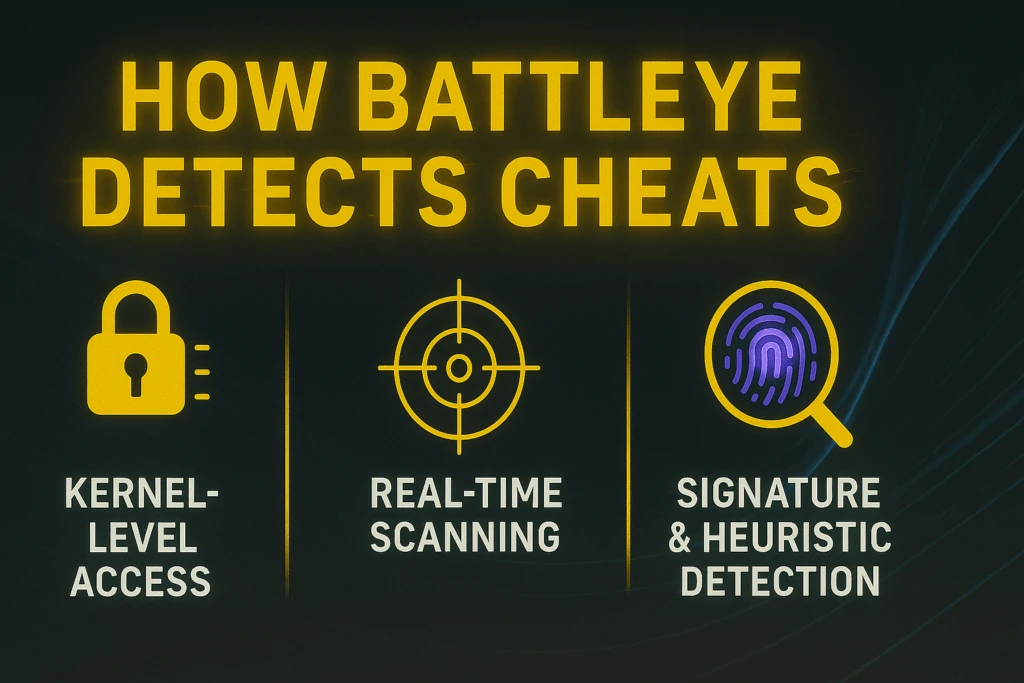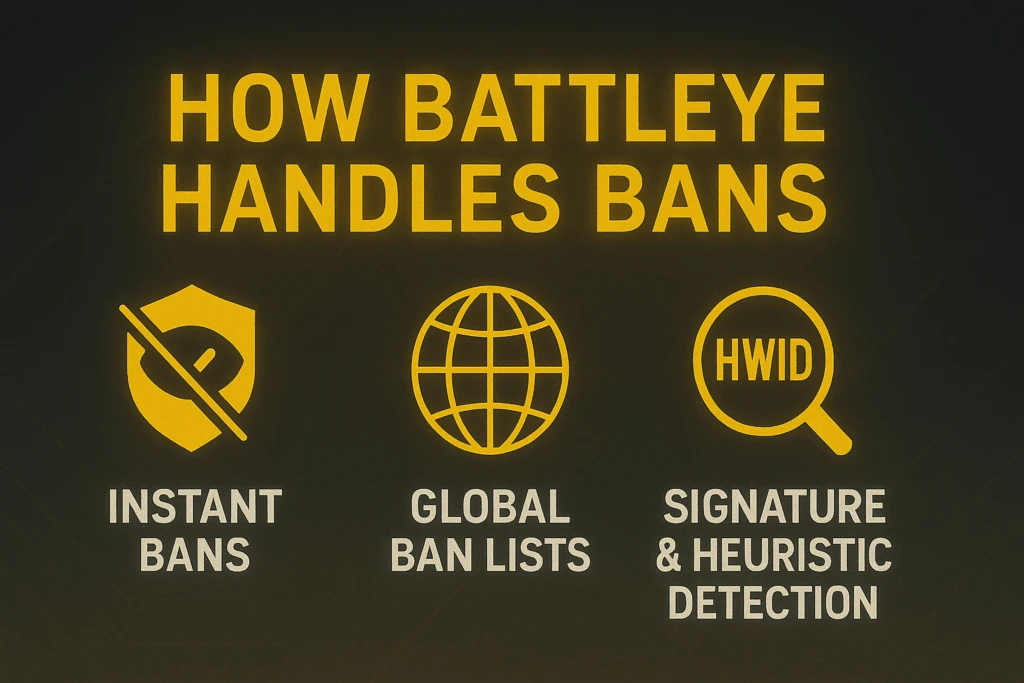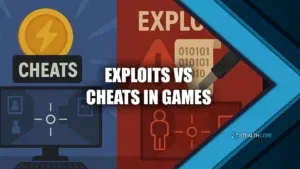BattlEye is one of the top anti-cheat systems in gaming. It uses kernel-level access and real-time scans, along with signature and heuristic detection methods. So, knowing how this feared anti-cheat system works can give a competitive advantage.
Ever wondered how BattlEye anti-cheat works and why it seems to strike out of nowhere?
This is one of the most aggressive detection systems out there and understanding how it works will help you keep your account secure. It matters as this system is not only sniffing out obvious cheats, it’s smart, layered, and constantly evolving.
This guide will delve into what BattlEye is all about, why it’s feared, how it detects and handles cheaters, and how it compares to other anti-cheat systems.

What Is BattlEye and Who Uses It?
BattlEye was developed by Bastian Suter and first launched in 2004. It wasn’t just designed to catch cheaters, and it was built to dominate them. Over the years, it has earned a reputation as one of the toughest anti-cheats in the industry.
You’ll find BattlEye integrated into a variety of major multiplayer games:
- Escape from Tarkov
- PUBG
- DayZ
- Arma 3
- Rainbow Six Siege
- Unturned

How BattlEye Anti-cheat Works and Detects Cheats
The strength of BattlEye lies in its hybrid approach to threat detection. Even those unfamiliar with low-level programming can grasp the general idea: it watches everything. Here’s how it works, simplified.
Kernel-Level Access
BattlEye installs itself at the kernel level, meaning it can see everything your OS does. This bypasses user-mode protections and gives it access to:
- Custom drivers
- Memory injection attempts
- System calls and manipulation
Real-Time Scanning
BattlEye doesn’t wait until after the game ends. It’s constantly scanning for anomalies, injected code, and cheat loaders the moment the game runs.
Signature vs. Heuristic Detection
- Signature detection works like antivirus software, it scans for known cheat code snippets.
- Heuristic detection watches for suspicious behavior like aim assist patterns, automated keystrokes, or unusual packet timings.
Behavioral Analysis
Even if a cheat is custom-made, BattlEye can detect it by observing how your game behaves: Are your movements too precise? Are memory values being manipulated abnormally?
It’s this mix that makes BattlEye so strong in the anti-cheat world. But staying hidden, like when using Escape from Tarkov Cheats, means having the right plan and knowing how the system works.

How BattlEye Handles Bans
BattlEye doesn’t always ban cheaters instantly. Its approach is calculated and designed to throw off cheat developers.
- Instant Bans: For publicly known cheats, bans are quick and decisive.
- Delayed Bans: If the cheat is less known or suspected to be under testing, BattlEye may wait days or even weeks. This avoids tipping off developers and ensures that detection signatures stay effective.
Some bans go further:
- Global Ban Lists: If you’re flagged in one BattlEye-protected game, you may be banned across others.
- HWID Bans: These target your actual hardware. Swapping accounts or using VPNs won’t help if your device is marked.
But using the right mindset and reliable tools, you can prevent bans and step ahead of this well-known anti-cheat system.
Why Most Cheats Don’t Last Long
Cheat creators build all kinds of tools to evade detection: obfuscated code, encrypted payloads, delayed loaders, even hardware spoofers. Some opt for private cheats with custom builds, assuming fewer users means lower exposure.
But the truth is, BattlEye eventually catches up.
Its mix of behavior tracking, heuristic analysis, and constant updates makes any long-term cheat inherently risky. What works today might be logged, analyzed, and neutralized by tomorrow. Especially for titles like Rust or Tarkov, staying undetected is more about timing than invincibility.
BattlEye updates often, sometimes without warning. So, it’s smart to stay prepared and explore some Rust Hacks while keeping safety in mind.
BattlEye vs Other Anti-Cheat Systems
Here’s a concise look at how BattlEye stands up to its main competitors:
- Easy Anti-Cheat (EAC)
Less intrusive and easier on system resources. While effective, it lacks the aggressive depth that BattlEye offers. - Riot Vanguard
Kernel-level and highly secure, but exclusive to Valorant. It’s one of the few that rivals BattlEye in detection quality, but its scope is limited. - Valve Anti-Cheat (VAC)
Slower, more passive, and heavily reliant on data collection. It favors stealth over speed and is more prone to allowing short-term abuse.
If you’re gaming in different titles, it’s smart to use trusted tools. For example, many players rely on DayZ cheats that keep them hidden.
FAQ: BattlEye Anti-Cheat
Can BattlEye detect private cheats?
Yes. Behavioral and heuristic detection means even unique or encrypted cheats can get flagged. That’s why you need undetected cheats that are proven and tested by users.
Will using a VPN help me avoid detection?
No. VPNs hide your IP, not your cheat loader or memory injection.
Can BattlEye bans be appealed?
Rarely. Most appeals are denied unless there’s a clear false positive, which is extremely uncommon.
Is BattlEye always running?
Only when a protected game is active, but some traces may linger briefly after you exit.
Final Thoughts
For anyone working in or around the cheat scene, knowing how BattlEye anti-cheat works is really important. It’s a system that’s constantly learning, adapting, and one step ahead of public and private cheat tools alike. While it isn’t invincible, it’s smart, patient, and getting better every day.
That’s why learning how to cheat safely in games is a must. Stealth-core is dedicated to providing top-tier and extra secure tools to level up your game. Not only that, we guide you through the process and educate our precious gamers to make sure they stay under the radar.


